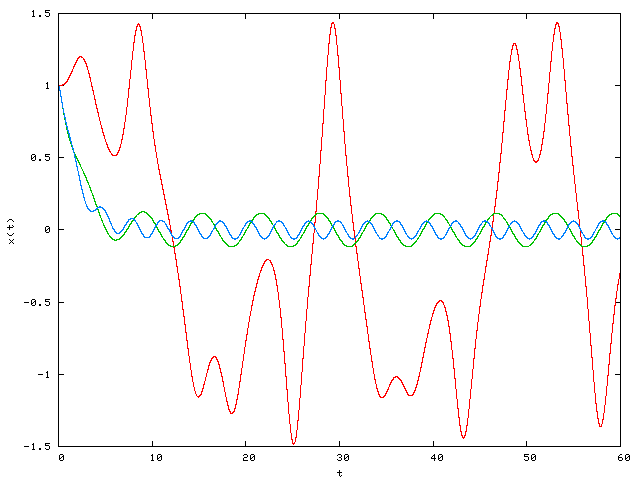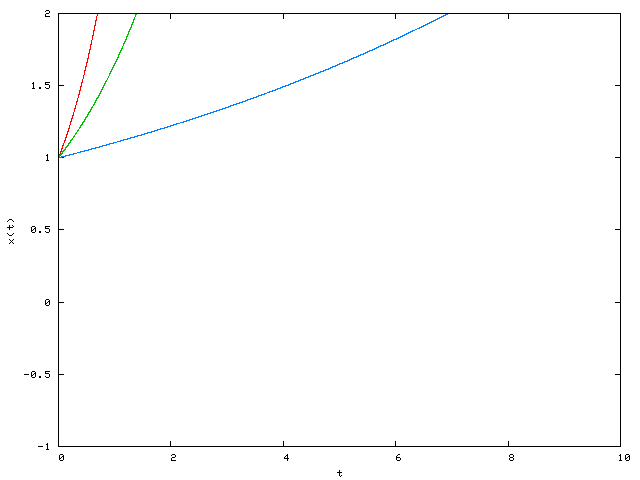Homework 4, due September 30, 2009.
Posted: Fri Sep 25, 2009 2:23 pm
Reading: Chapter 4.
Exercises: from the course text, problems 4.1, 4.3, 4.4, 4.5, 4.9 and 4.10.
Also, match the solutions to the following initial value problems to the plots. Every equation has a corresponding solution plot. For each equation, state the reason why the solution plot must be the corresponding plot. For example, an answer would be "the solution to equation 11 is the blue curve on plot 8 because..."
You may choose to solve every single differential equation in this homework. In that case I will be impressed, but only by your persistence.
Based only upon what we have covered in the class so far, it is possible to complete this homework by solving six differential equations. Doing so would require some creative thinking. I suspect that most people will have to solve eight or nine differential equations to complete this homework.
For solution plots 2, 3, 4, 6, 7 and 8 indicate what the difference is between the solutions graphed on the same plot and what the differences are in the corresponding equations. Construct another equation of a similar form and without actually solving it, sketch what its solution would approximately look like on the plot with the other three solutions.
Equations
Exercises: from the course text, problems 4.1, 4.3, 4.4, 4.5, 4.9 and 4.10.
Also, match the solutions to the following initial value problems to the plots. Every equation has a corresponding solution plot. For each equation, state the reason why the solution plot must be the corresponding plot. For example, an answer would be "the solution to equation 11 is the blue curve on plot 8 because..."
You may choose to solve every single differential equation in this homework. In that case I will be impressed, but only by your persistence.
Based only upon what we have covered in the class so far, it is possible to complete this homework by solving six differential equations. Doing so would require some creative thinking. I suspect that most people will have to solve eight or nine differential equations to complete this homework.
For solution plots 2, 3, 4, 6, 7 and 8 indicate what the difference is between the solutions graphed on the same plot and what the differences are in the corresponding equations. Construct another equation of a similar form and without actually solving it, sketch what its solution would approximately look like on the plot with the other three solutions.
Equations
- red="a", blue="b", green="c"
- red="a", blue="b", green="c"
- red="a", blue="b", green="c"
- red="a", blue="b", green="c"
- red="a", blue="b", green="c"
- red="a", blue="b", green="c"
- red="a", blue="b", green="c"
- red="a", blue="b", green="c"
- red="a", blue="b", green="c"



































